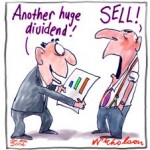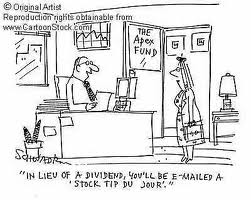 You can check out the latest Carnival of Personal Finance (#298 – The Best Money Articles Online) here.
You can check out the latest Carnival of Personal Finance (#298 – The Best Money Articles Online) here.
_________________________
I didn’t expect that one of my most argued series of posts would be about dividends; I thought it would be around my vehemently anti-anti-debt stance (see if you can work THAT out).
So, I’d like to wrap up that discussion with a point-by-point review of a really interesting comment left by Deek:
I see where you are coming from and disagree to a point. It depends on what your outlook is. 7 mil in 7 years of course dividends aren’t going to get you their.
But my grandfather who was a coal miner who cannot work into his 70s because of the type of job. He was able to be a dividend millionaire. When he did retire the income from dividends, his pension and social security was more than enough for him to live comfortable into his 90s and leave money for his children.
At 90 years old he isn’t going to work,build a business or mess around with real estate. He wanted to check he dividend paying stocks once a month and enjoy retirement, drink a few beers and his biggest worry was cutting the grass.
I also find it interesting you mention Berkshire Hathaway. Depending on when you look at BRK holdings they do invest a significant amount of money into dividend paying stocks even though they do not themselves pay a dividend.
This really summarizes a lot of the for/against arguments around dividend stocks, at least as raised by the many reader comments to my earlier posts, so I thought I should run my readers through it:
1. Yes, this blog is specifically aimed at those who want to make what I call a Large Number / Soon Date (eg $7m7y or $2m5y, etc.); however, in this case, I don’t think it makes any difference: investing in stocks just because they happen to produce dividends is dumb.
In my businesses, I am free to create a dividend whether the business is performing well or otherwise. So can the boards of public companies. If that simple point doesn’t win the pro-dividend lobby over, nothing will.
2. It seems like Deek’s grandfather did an amazing job! Investing in a bunch of “dividend stocks” – and, holding for long periods – is certainly a lot better than many other strategies, certainly for non-$7m7y’ers.
But, he may – probably (certainly!) – have done even better by following a Value Investing approach (e.g. such as that proposed by Rule # 1 Investing author, Phil Town). Buying and holding great stocks – ones that produce a steadily growing profit stream – is an even better way to make long-term money than buying and holding stocks just because they happen to pay a steady dividend stream. The two should be synonymous, sadly that’s not always the case.
3. I’m not suggesting that you (or Deek’s grandfather) should invest in business or real-estate etc. Although, I strongly argue that in retirement RE, in particular, provides a much more secure retirement, again for $7m7y’ers.
4. Deek’s point about Warren Buffett (“BRK holdings they do invest a significant amount of money into dividend paying stocks even though they do not themselves pay a dividend”) neatly summarizes my key point:
Like Warren Buffett, I am not against investing in stocks that pay a dividend; I am simply for investing in great businesses – or, the stocks of great businesses – regardless of whether or not they pay a dividend.
Get it?







